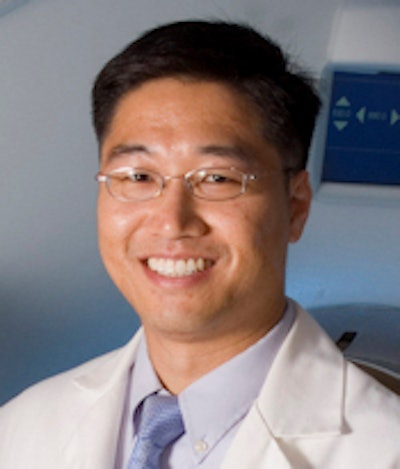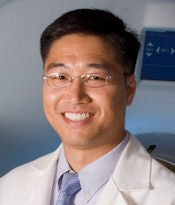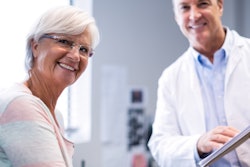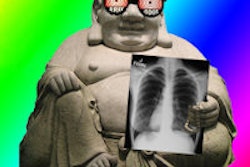
When given the chance, patients really appreciate the opportunity to meet with radiologists to discuss findings in their radiology report, researchers from Massachusetts General Hospital (MGH) concluded after launching a pilot service to provide patients with consultations on their imaging results.
Both referring physicians and their patients have found the radiology consultation clinic to be a significant benefit, according to the MGH team.
"They've started to see the value that we provide, not only in the reading room but outside the reading room," said Dr. Garry Choy, who described MGH's initial experience with the clinic during a session at the recent Society for Imaging Informatics in Medicine (SIIM) annual meeting in Long Beach, CA.
A hallway conversation
The idea for a radiology consultation clinic stemmed from a hallway conversation between a radiologist (Dr. Michael Stone) and a 45-year-old patient with stage IV lung cancer after a restaging scan, Choy said. Having never been shown her images, the patient mentioned that she had some questions about what her cancer and effusion looked like.
 Dr. Garry Choy from MGH.
Dr. Garry Choy from MGH.
The radiologist "didn't realize the patients never really got to see their imaging, and he offered to bring her into the reading room and show her her images," he said. "Since then, we've done many more consultations."
Traditionally, radiologists have had very little interaction with patients. The group, which included Stone, Dr. Mark Mangano, Dr. Dushyant Sahani, and primary care physician Dr. Susan Bennett, wanted to change that by having radiologists help patients gain more knowledge of their disease process and answer questions about their imaging findings, Choy said. They also wanted to see if they could offer value by helping referring physicians as well.
Some radiologists -- for example, interventional radiologists and breast imagers -- are actively involved with patients, but the MGH group wanted to see if there "are other opportunities in other areas of radiology where we could also be on the front lines, helping our referring physicians and talking with patients," Choy said.
To date, the pilot radiology consultation clinic has seen approximately 25 patients, all of whom were referred directly by referring physicians for consultation. Consultations have typically been held in space borrowed from interventional radiologists in their clinic rooms and also in conference rooms. The only room requirement is that it needs to allow access to the hospital's PACS network.
"We don't do any physical exams, we don't do any vital signs; this is purely a consultation and discussion of the images for our patients," he said.
Consultation workflow
Radiology consultations take place after a patient visits his or her primary care physician or oncologist, and each session runs from 15 minutes to 30 minutes.
So far, the clinic has been a free service. Radiologists have volunteered their services as part of the study, he said.
"Many patients have offered to pay cash, but we have refused that thus far," Choy said. "We are looking into the business models, but so far we haven't billed for any encounters."
Reasons for the consultations have included discussing incidental findings and reviewing restaging scans, he said. Other consultations have addressed specific chronic findings such as emphysema, vascular and coronary artery atherosclerosis, and hepatic steatosis. Future services could include calculating intra-abdominal fat and body mass index.
Other medical specialties have also expressed interest in sending patients to the radiology consultation clinic, he said.
Positive feedback
The researchers conducted surveys to assess patient satisfaction and feedback, which has been overwhelmingly positive from both referring physicians and patients, according to Choy.
"Patients have really expressed their gratitude and appreciation for the type of work that we've done," he said. "In fact, many did not know what a radiologist was, and they really felt that the radiologist explained, in many cases, the disease processes -- thankfully, with the use of images -- in a different way and also in a way that they really liked."
Positive letters about the service have been sent to the hospital's president and CEO and the department chair, Choy said. Patients have also told their referring physicians that they really liked the clinic.
Despite the positive feedback, work still needs to be done to make this type of clinic sustainable in radiology, including the development of a business model. The researchers are evaluating a fee-for-service model in which patients can pay out of pocket if they want to, Choy said.
"There needs to be a mechanism for sustainable reimbursement from the public and private payors for this to work in the long term," he said. "Over time, hopefully that will happen. We need advocacy from groups like the American College of Radiology and professional societies of radiology such that we can push for this."
The consultation clinic also needs continued research and assessment of its goals, such as exploring patient education and preventive health and counseling, for example.
Choy noted that collaboration with referring physicians is required for this kind of clinic. Workflow issues include scheduling and resource allocation of radiologist time.
"That is something we have to look into: how we can incorporate a clinic into a busy radiology practice," he said. "Currently, we are paid to read films, but there is still value in having a clinic and a frontline approach to having radiologists seeing and interacting with our patients."
Residents and fellows have expressed significant interest in participating in the radiology consultation clinic.
"Hopefully long-term we can [create] a new generation of radiologists who are even more dedicated to providing patient-centered imaging," he said.




















